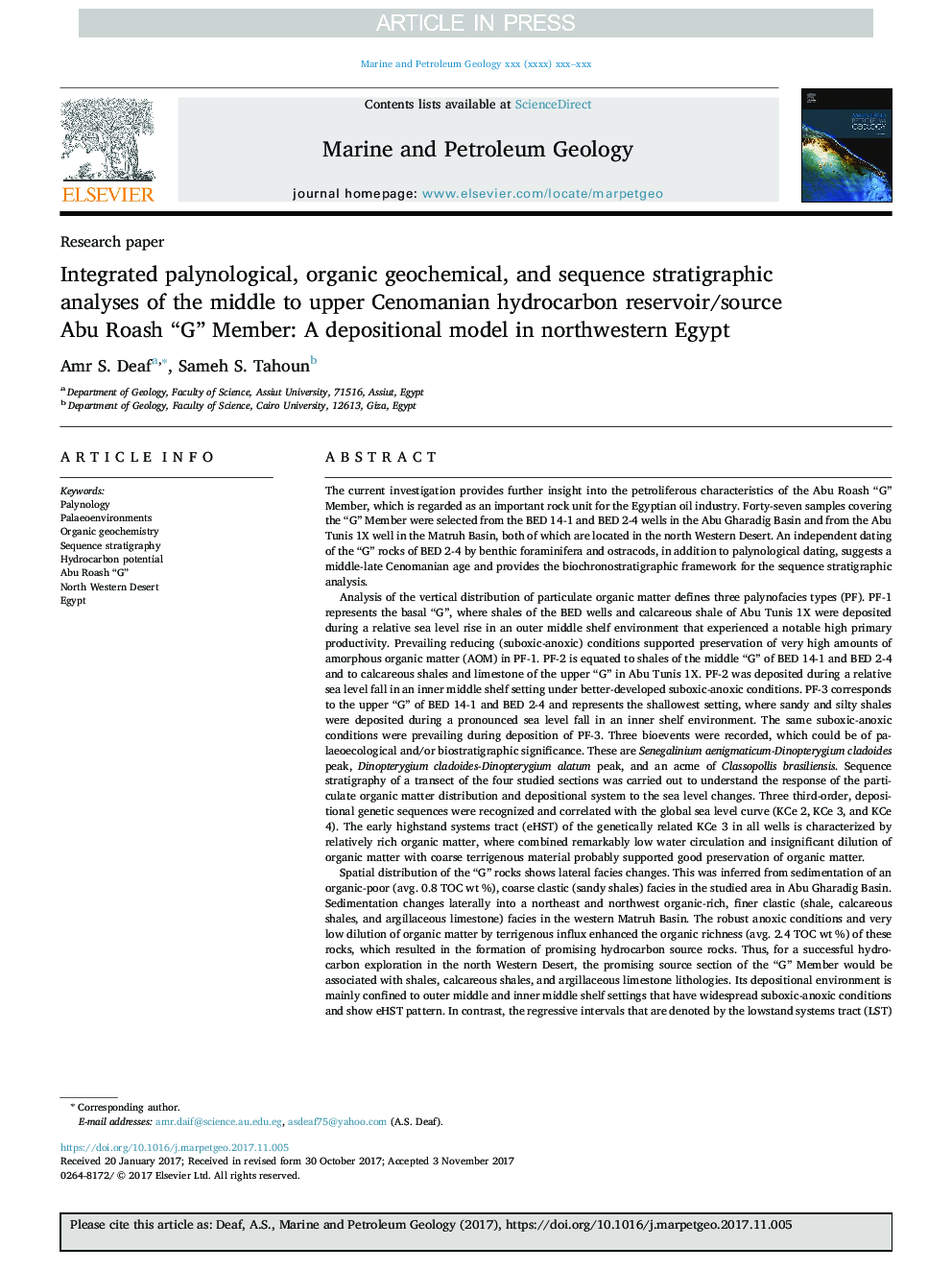| Article ID | Journal | Published Year | Pages | File Type |
|---|---|---|---|---|
| 8909132 | Marine and Petroleum Geology | 2018 | 31 Pages |
Abstract
Spatial distribution of the “G” rocks shows lateral facies changes. This was inferred from sedimentation of an organic-poor (avg. 0.8 TOC wt %), coarse clastic (sandy shales) facies in the studied area in Abu Gharadig Basin. Sedimentation changes laterally into a northeast and northwest organic-rich, finer clastic (shale, calcareous shales, and argillaceous limestone) facies in the western Matruh Basin. The robust anoxic conditions and very low dilution of organic matter by terrigenous influx enhanced the organic richness (avg. 2.4 TOC wt %) of these rocks, which resulted in the formation of promising hydrocarbon source rocks. Thus, for a successful hydrocarbon exploration in the north Western Desert, the promising source section of the “G” Member would be associated with shales, calcareous shales, and argillaceous limestone lithologies. Its depositional environment is mainly confined to outer middle and inner middle shelf settings that have widespread suboxic-anoxic conditions and show eHST pattern. In contrast, the regressive intervals that are denoted by the lowstand systems tract (LST) and/or the late HST (lHST) typify the relatively coarse clastics as good quality reservoir rocks that are characterized by poor organic richness due to dilution with terrigenous influx.
Keywords
Related Topics
Physical Sciences and Engineering
Earth and Planetary Sciences
Economic Geology
Authors
Amr S. Deaf, Sameh S. Tahoun,
